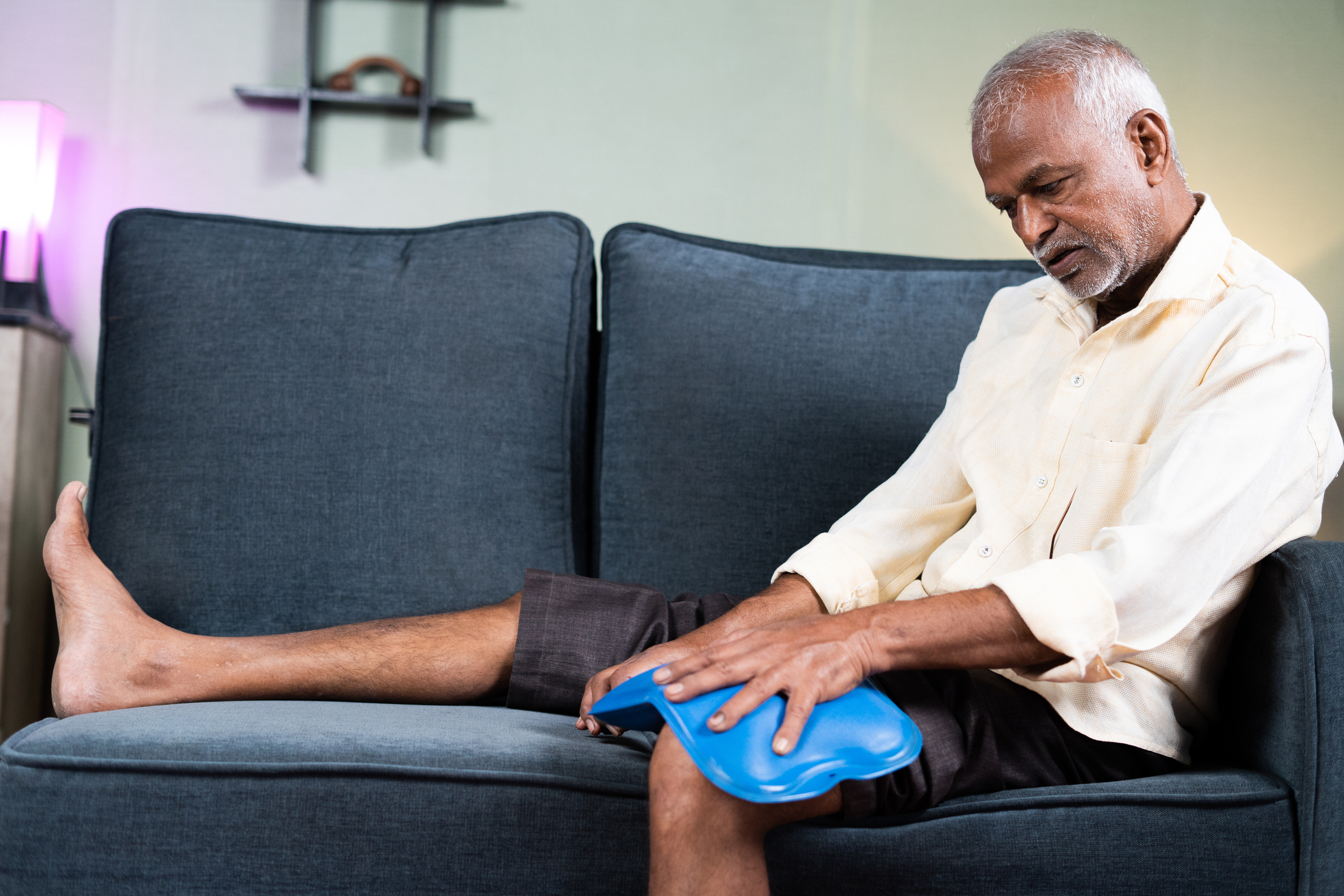Get Easy Health Digest™ in your inbox and don’t miss a thing when you subscribe today. Plus, get the free bonus report, Mother Nature’s Tips, Tricks and Remedies for Cholesterol, Blood Pressure & Blood Sugar as my way of saying welcome to the community!
Natural approaches for alleviating knee pain

Arthritis and joint pain affect millions of Americans annually. Pain and inflammation wreak havoc on the body, alter one’s ability to carry out their daily activities, reduces joy and over time causes depression. Knee pain is among the most common types of pain for which people seek medical advice and treatment. Non-steroidal anti-inflammatory drugs (NSAIDs), steroid injections and surgery seem to be more common than not. But they don’t have to be. Naturally reducing symptoms and preventing further wear and tear can do much to prevent the problem from returning, and restoring quality of life.
The knee joint
The knee joint is taken for granted to do what it needs to do to balance, bear weight, propel, raise and lower you. The knee is a hinge joint, which means it is meant to move back and forth from front to back, and not bend or twist or rotate side to side. Yet, this is what happens when playing sports or moving too quickly before ample warmup.
To help facilitate weight absorption and body movement the knee must rely on a bunch of muscles, tendons, ligaments and bones all working in tandem. When one piece of the puzzle is too tight, too weak, over developed or stiff, sprains, strains, dislocations and spurs can occur.
Knee pain and arthritis
When one seeks medical advice for knee pain in their 30s or older, they are often given a diagnosis of osteoarthritis. If you have been given an arthritis diagnosis, please don’t let that word derail your efforts at natural relief and prevention. As we age, most people will get some form of arthritis or wear and tear on their joints. It’s natural and normal. So don’t be afraid of the diagnosis label. Read my advice on the top 10 arthritis mistakes here, or check out my book Arthritis Reversed, for a comprehensive program. Among the most important components of any pain reduction program, is reduction of inflammation.
The inflammation response
Inflammation is a natural response your body has to stress, whether emotional or physical. The inflammation response helps protect the injured area and also to repair it. However, inflammation that does not resolve itself and becomes chronic is cause for concern, as it can cause serious health concerns and disease. Chronic inflammation breaks your body’s internal balance point, disrupts its ability to regulate the immune system and affects the functions of the central nervous system. As such, under the influence of chronic low-grade inflammation, you run a greater risk for pain, illness, disease and accelerated signs and symptoms of aging. The advice below will help you reduce inflammation, and thus pain, naturally.
PRICE-less first line advice
If you injure your knee or suddenly feel pain there, the acronym PRICE is a good reminder of what can help in the short run. It stands for Protect, Rest, Ice, Compress, and Elevate. Here’s the overview:
- Protecting the knee from additional trauma can be done by reducing or stropping activities that stress the joint too much, and wrapping the knee to keep it protected from fall or impact while recovering.
- Resting the knee allows it to begin repair while also preventing repetitive strain. But don’t keep it immobile for too long or you may also develop frozen joint syndrome.
- Icing the knee will help reduce pain and inflammation in the short run, say 20 minutes at a time, several times that day.
- Compressing the knee also helps reduce swelling and pain by holding sustained pressure to promote circulation and holding the bones in alignment to prevent rub.
- Elevating the knee to above the heart will reduce swelling by allowing gravity to help circulate accumulated fluids around the knee for processing of inflammation bad stuff
Apply some DMSO
DMSO is an old-timey product that athletes used to use for sprains and strains. I love it. Unlike other topical pain creams or ointments (which remain largely on skin surface), DMSO absorbs quickly into the skin and reaches deeper tissues and membranes. It has been found to be a great carrier of other substances, and it aids in their absorption. I sometimes use other topical pain/inflammation creams mixed with DMSO gel to help reduce pain and inflammation.
Because DMSO has antioxidant properties it neutralizes free radicals around an injured site. It also stabilizes and stops leakage from damaged cell membranes and reduces pain by blocking peripheral nerve C fibers. DMSO is rich in sulfur, one of the building blocks of collagen, the connective tissue that makes up cartilage. As such, DMSO is often used for those suffering arthritis and joint pain, though it is equally effective for muscle pain and spasms. You can read more about this product in an article I wrote here.
For more ways to kill knee pain without surgery see part two of my post.












